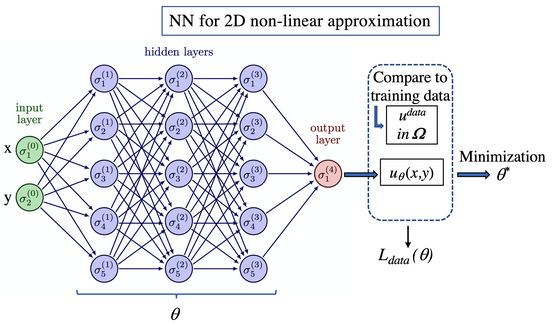
In the tutorial paper, A hands-on introduction to Physics-Informed Neural Networks for solving partial differential equations with benchmark tests taken from astrophysics and plasma physics, the author provides an encompassing guide to using Physics-Informed Neural Networks (PINNs) for solving complex PDEs. The paper showcases the application of this deep learning technique to equations extracted from astrophysical scenarios, such as magnetic plasma dynamics and the internal structure of stars. PINNs’ capacity to handle various boundary conditions, solve parametric problems, and their straightforward approach to inverse problems demonstrate their flexibility and power in dealing with scientific computations.
**Takeaways: **
- PINNs minimize the residuals of PDEs, allowing for the solving of complex scientific equations.
- They accommodate soft constraints and enforce hard boundary conditions during minimization.
- The study highlights diverse applications like the Grad-Shafranov-like and Lane-Emden equations.
- PINNs prove to be versatile tools for research in astrophysics and plasma physics.
The accessibility of Python codes accompanying the paper, based on PyTorch and TensorFlow, underscores the growing intersection of AI and scientific discovery. PINNs represent a bridge between deep learning technology and the physical sciences, with potential to transform the way we approach scientific problems.